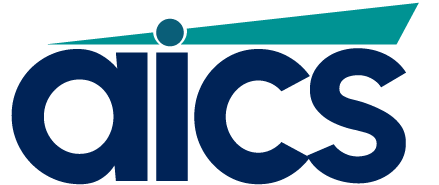Factors Affecting the Span of Control in Organizations
Introduction
Many companies struggle with maintaining an ideal span of control. As organizations grow and evolve, the span of control can become too wide or too narrow, impacting overall efficiency and employee satisfaction. Understanding the factors that influence the span of control is crucial for managing organizational structure effectively.
Key Factors Affecting the Span of Control
1. Experience Level of Employees
Highly Experienced Employees
Experienced employees require less supervision and guidance. They are more likely to work independently and may feel resentful if managers interfere too much. Teams with a high average experience level can thrive with a wide span of control.
Experienced employees require less supervision and guidance. They are more likely to work independently and may feel resentful if managers interfere too much. Teams with a high average experience level can thrive with a wide span of control.
Inexperienced Employees
Inexperienced employees typically need more guidance and support. A narrower span of control ensures they receive the necessary supervision to perform effectively.
Inexperienced employees typically need more guidance and support. A narrower span of control ensures they receive the necessary supervision to perform effectively.
2. Complexity of Tasks
Simple Tasks
Teams performing simple, routine tasks require less managerial input. These teams can operate well with a wide span of control.
Teams performing simple, routine tasks require less managerial input. These teams can operate well with a wide span of control.
Complex Tasks
Teams handling complex, varied tasks involving multiple stakeholders often need closer managerial oversight. A narrower span of control helps coordinate and lead their work effectively.
Teams handling complex, varied tasks involving multiple stakeholders often need closer managerial oversight. A narrower span of control helps coordinate and lead their work effectively.
3. Employee Motivation Levels
Highly Motivated Employees
Motivated employees are self-starters and can perform well with minimal direct supervision. A wide span of control can empower these employees to take initiative and drive results.
Motivated employees are self-starters and can perform well with minimal direct supervision. A wide span of control can empower these employees to take initiative and drive results.
Less Motivated Employees
Teams with lower motivation levels may need more supervision to maintain productivity. A narrower span of control ensures managers can provide the necessary guidance and support.
Teams with lower motivation levels may need more supervision to maintain productivity. A narrower span of control ensures managers can provide the necessary guidance and support.
4. Capabilities of Managers
Management Style
Managers with different styles and capabilities will have varying ideal spans of control. Some managers excel with larger teams, while others perform better with smaller, more focused teams.
Managers with different styles and capabilities will have varying ideal spans of control. Some managers excel with larger teams, while others perform better with smaller, more focused teams.
Administrative Support
Managers who have administrative support can handle larger teams more effectively. Conversely, managers burdened with additional administrative duties may need a narrower span of control to manage their responsibilities efficiently.
Managers who have administrative support can handle larger teams more effectively. Conversely, managers burdened with additional administrative duties may need a narrower span of control to manage their responsibilities efficiently.
5. Geographic Dispersion
Centralized Teams
Managers with teams in the same location can more easily manage larger teams due to direct access and face-to-face interactions.
Managers with teams in the same location can more easily manage larger teams due to direct access and face-to-face interactions.
Distributed Teams
Teams spread across multiple locations or time zones require more effort to manage. A narrower span of control may be necessary to ensure effective communication and coordination.
Teams spread across multiple locations or time zones require more effort to manage. A narrower span of control may be necessary to ensure effective communication and coordination.
6. Employee Experience
Employee Engagement
A positive employee experience is crucial for retention. Overworked managers can lead to disengaged employees. Ensuring an appropriate span of control helps maintain a healthy balance between managerial workload and employee engagement.
A positive employee experience is crucial for retention. Overworked managers can lead to disengaged employees. Ensuring an appropriate span of control helps maintain a healthy balance between managerial workload and employee engagement.
Career Development
Managers play a key role in employee development. A manageable span of control allows managers to provide coaching, learning opportunities, and career guidance effectively.
Managers play a key role in employee development. A manageable span of control allows managers to provide coaching, learning opportunities, and career guidance effectively.
7. Use of Technology
Digital Collaboration Tools
Technology has revolutionized communication and management. Digital tools, AI, and automation can help managers handle larger teams more efficiently. Organizations that leverage these tools can support wider spans of control.
Technology has revolutionized communication and management. Digital tools, AI, and automation can help managers handle larger teams more efficiently. Organizations that leverage these tools can support wider spans of control.
Traditional Communication
Teams that rely on traditional communication methods or require in-person interactions may need a narrower span of control to function effectively.
Teams that rely on traditional communication methods or require in-person interactions may need a narrower span of control to function effectively.
8. Level of Employee Autonomy
Autonomous Work Environments
Modern workplaces often encourage autonomy. Employees who work independently or in self-managing teams can thrive with a wide span of control.
Modern workplaces often encourage autonomy. Employees who work independently or in self-managing teams can thrive with a wide span of control.
High Supervision Needs
Teams that require more supervision and direction benefit from a narrower span of control to ensure clear guidance and oversight.
Teams that require more supervision and direction benefit from a narrower span of control to ensure clear guidance and oversight.
9. Administrative Support for Managers
Focused Management
Managers should focus primarily on their core responsibilities. Additional administrative duties can stretch them thin, impacting their ability to manage effectively. A narrower span of control may be necessary to ensure managers can perform their roles well.
Managers should focus primarily on their core responsibilities. Additional administrative duties can stretch them thin, impacting their ability to manage effectively. A narrower span of control may be necessary to ensure managers can perform their roles well.
Delegating Responsibilities
Delegating certain management tasks to senior employees can alleviate pressure on managers. This allows managers to focus on strategic leadership and can support a wider span of control.
Delegating certain management tasks to senior employees can alleviate pressure on managers. This allows managers to focus on strategic leadership and can support a wider span of control.
Conclusion
Understanding and managing the factors that influence the span of control is essential for optimizing organizational structure and performance. By considering employee experience, task complexity, motivation levels, managerial capabilities, geographic dispersion, technology use, employee autonomy, and administrative support, organizations can create a balanced and effective span of control.
AICS can help organizations navigate these complexities by providing expert insights and tailored solutions to optimize your span of control and enhance overall organizational efficiency.
For more information on how AICS can support your organization, contact us today.
This guide provides a comprehensive overview of the factors affecting the span of control and how AICS can help organizations manage these factors effectively.




